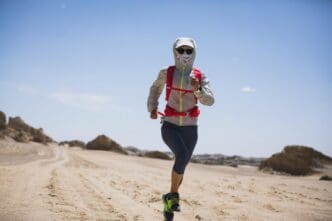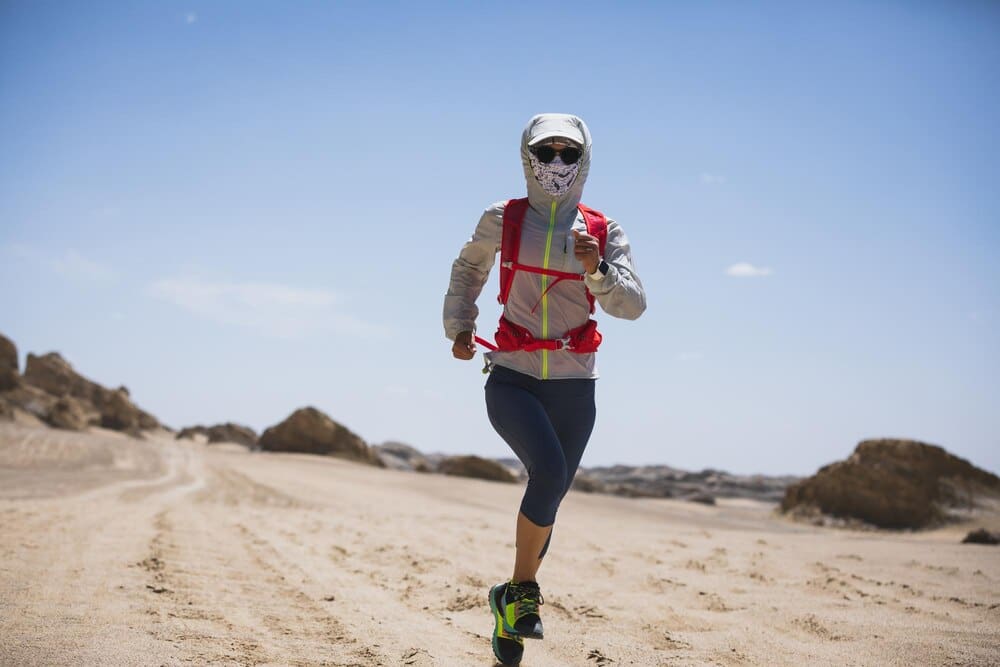For runners of all abilities, selecting the right gear for hot weather is a critical decision that directly impacts comfort, performance, and, most importantly, safety. When the temperature and humidity climb, your apparel and accessories become essential tools for managing your body’s core temperature, wicking away sweat, and protecting you from the sun’s harmful rays. Whether you’re running on city streets or remote trails, understanding why certain materials and products outperform others is the key to transforming a potentially dangerous summer slog into a sustainable and enjoyable part of your fitness routine.
Why Your Gear Choice Matters in the Heat
Running in hot weather places significant stress on your body’s natural cooling system. Your primary defense mechanism is sweating. As sweat evaporates from your skin, it carries heat away, helping to regulate your internal temperature in a process known as thermoregulation.
However, the effectiveness of this process can be severely hampered by the wrong clothing. Heavy fabrics or materials that trap moisture prevent sweat from evaporating efficiently. This can lead to a dangerous rise in core body temperature, increasing the risk of heat-related illnesses like heat exhaustion and, in severe cases, life-threatening heatstroke.
Unlike cold-weather running, where the goal is to trap a layer of warm air close to the skin for insulation, hot-weather running is all about maximizing ventilation and moisture release. Think of your gear not as an outfit, but as a high-performance cooling system. Every piece should be chosen with the express purpose of helping your body do its job better.
The Foundation: Apparel That Breathes
The clothing you wear is your first line of defense against the heat. The right combination of fabric, fit, and color can make a world of difference in how you feel from the first mile to the last.
Tops: Singlets and Tech Tees
The single most important rule for summer running tops is to avoid cotton at all costs. Cotton is highly absorbent; it soaks up sweat like a sponge and holds it against your skin. A wet cotton shirt is heavy, clammy, and completely negates your body’s evaporative cooling process.
Instead, look for technical fabrics made from synthetic blends like polyester, nylon, or polypropylene. These materials are hydrophobic, meaning they don’t absorb water. They actively pull moisture away from your skin and push it to the outer surface of the fabric, where it can evaporate quickly. This is the “moisture-wicking” technology you see advertised, and it is non-negotiable for summer runs.
When it comes to fit, a looser-fitting singlet or t-shirt often provides the best airflow, allowing air to circulate over your skin. Some runners prefer a snug, compression-style fit, which can also be effective at wicking sweat, but it’s a matter of personal comfort. Finally, opt for light colors like white, yellow, or pastels, as they reflect the sun’s rays, whereas dark colors absorb them.
Bottoms: Shorts and Skirts
The same principles of fabric and color apply to your running shorts or skirts. Seek out lightweight, quick-drying synthetic materials. Many running shorts are designed with features specifically for warm weather, such as mesh panels for added ventilation or split sides for a greater range of motion.
Pay close attention to the liner. Most running shorts come with a built-in brief made of a soft, moisture-wicking material. This liner is designed to be worn without underwear, reducing layers and preventing the chafing that can be exacerbated by heat and sweat. A good liner is the key to a comfortable, friction-free run.
Socks: The Unsung Heroes
Your feet will sweat profusely in the heat, making sock choice incredibly important for preventing blisters. Just like with your shirt, cotton socks are your enemy. They will become saturated with sweat, leading to soft, waterlogged skin that is highly susceptible to friction and blistering.
Choose running-specific socks made from synthetic blends or lightweight merino wool. These materials excel at managing moisture, keeping your feet drier and more comfortable. A well-designed running sock will also have features like a seamless toe and anatomical fit to further reduce potential friction points.
Essential Accessories for Sun and Sweat Management
Beyond your basic apparel, a few key accessories provide an additional layer of protection against the elements, helping you manage sun exposure and keep sweat out of your eyes.
Headwear: Hats and Visors
A good running hat or visor serves two primary functions: it shields your face and eyes from direct sunlight and acts as a sweatband, absorbing perspiration from your forehead before it can drip into your eyes. Look for models made from the same lightweight, wicking materials as your apparel, and prioritize those with mesh panels for maximum breathability.
Many runners prefer a visor over a full hat, as it allows heat to escape more freely from the top of the head. A dark-colored underbill is another pro feature to look for, as it helps reduce glare reflecting up from the pavement.
Eye Protection: Performance Sunglasses
Sunglasses are more than a style accessory; they are a crucial piece of protective equipment. Prolonged exposure to the sun’s ultraviolet (UV) rays can damage your eyes over time. Look for running-specific sunglasses that offer 100% UVA and UVB protection.
Performance models are typically lightweight, feature rubberized nose pads and temple tips to prevent slipping when you sweat, and incorporate ventilation to prevent the lenses from fogging up. By reducing glare, they also help you relax your facial muscles, preventing the fatigue and headaches that can come from squinting for an entire run.
Sunscreen: Your Non-Negotiable Shield
Sunscreen is an absolute must for any skin that will be exposed during your run. The cumulative effects of sun exposure are a significant health risk. Choose a broad-spectrum sunscreen with an SPF of at least 30, which protects against both UVA (aging) and UVB (burning) rays.
For running, it’s essential to use a “sport” or “sweat-resistant” formula. These are designed to stay put even when you’re perspiring heavily. Apply it liberally to all exposed skin—including your ears, the back of your neck, and the tops of your feet if wearing low-cut socks—about 15 to 20 minutes before you head out the door to allow it to fully bind to your skin.
Hydration and Fueling on the Go
As your sweat rate increases in the heat, so does your need for fluid and electrolyte replacement. Carrying hydration with you is not just for marathoners; it becomes necessary for much shorter distances in the summer.
Carrying Your Water: Vests, Belts, and Handhelds
How you carry your fluids is a matter of personal preference and depends on the length of your run. For shorter efforts (under an hour), a simple handheld bottle might be sufficient. These are ergonomic and often include a small pouch for a key or a gel.
For medium to long runs, a hydration belt or vest is a better option. Belts sit on your waist and can hold one or two larger bottles, plus storage pockets. Hydration vests are worn like a backpack and distribute the weight of the water evenly across your torso. They offer the most capacity and storage, making them ideal for long-distance training in the heat.
Electrolytes: Replacing What You Sweat Out
When you sweat, you don’t just lose water; you also lose critical minerals called electrolytes, primarily sodium and potassium. These minerals are vital for muscle function and fluid balance. Simply drinking plain water may not be enough on hot, long runs, as it can further dilute your body’s electrolyte concentration.
Consider adding an electrolyte supplement to your water. These come in many forms, including powders, dissolvable tablets, and chews. They help replenish what you’ve lost through sweat, which can help prevent muscle cramping and maintain performance.
Putting It All Together: A Sample Hot-Weather Kit
To simplify, here’s what your gear setup might look like based on run duration:
- Short Run (under 45 minutes): A moisture-wicking tee or singlet, lightweight shorts with a liner, and technical socks. A hat or visor is recommended.
- Medium Run (45-90 minutes): All of the above, plus sunglasses, sweat-resistant sunscreen, and a handheld water bottle with water or an electrolyte drink.
- Long Run (90+ minutes): All of the above, but upgrade your hydration system to a waist belt or vest. This ensures you have enough fluid and provides space to carry energy gels or other nutrition. Applying an anti-chafe balm to potential hotspots before you start is also a wise precaution.
Ultimately, running safely and comfortably in the heat comes down to smart preparation. By investing in the right gear, you are not just buying products; you are investing in a system that helps your body perform its best under stressful conditions. Listen to your body, adjust your effort to the temperature, and use your gear as the powerful tool it is. This approach will allow you to not only survive summer running but to truly thrive.







